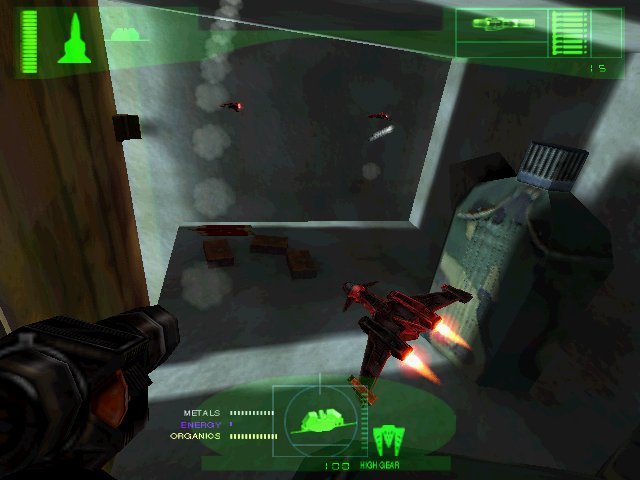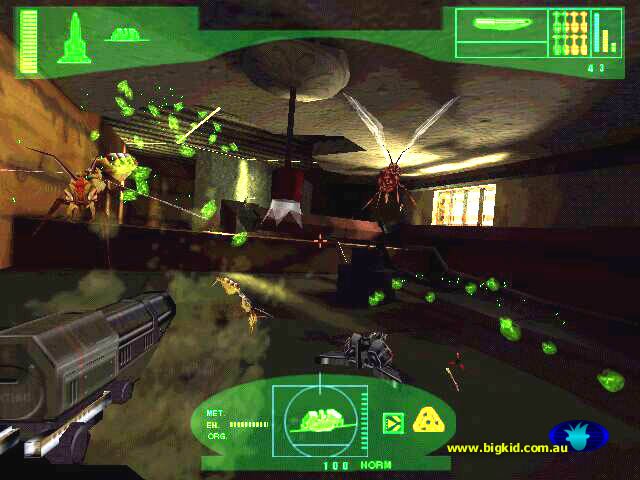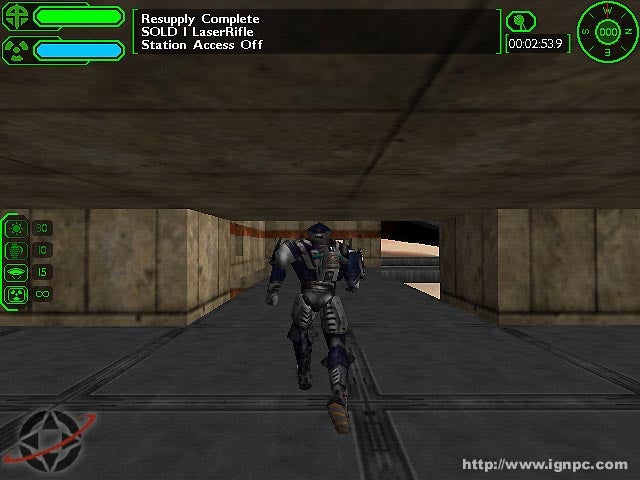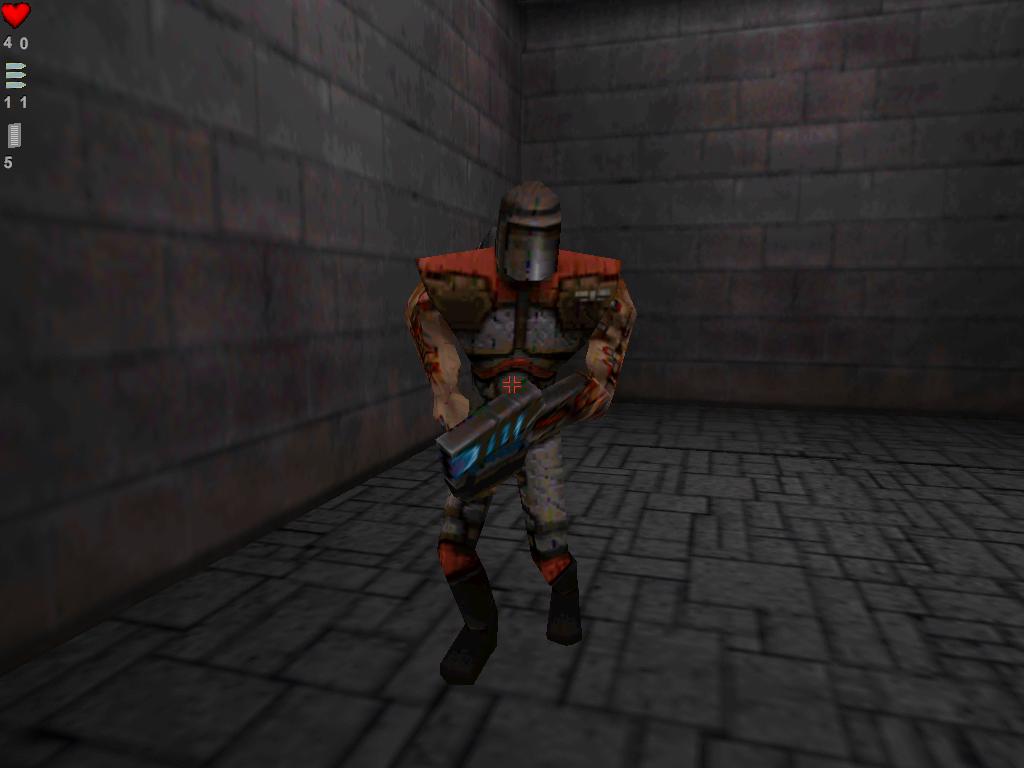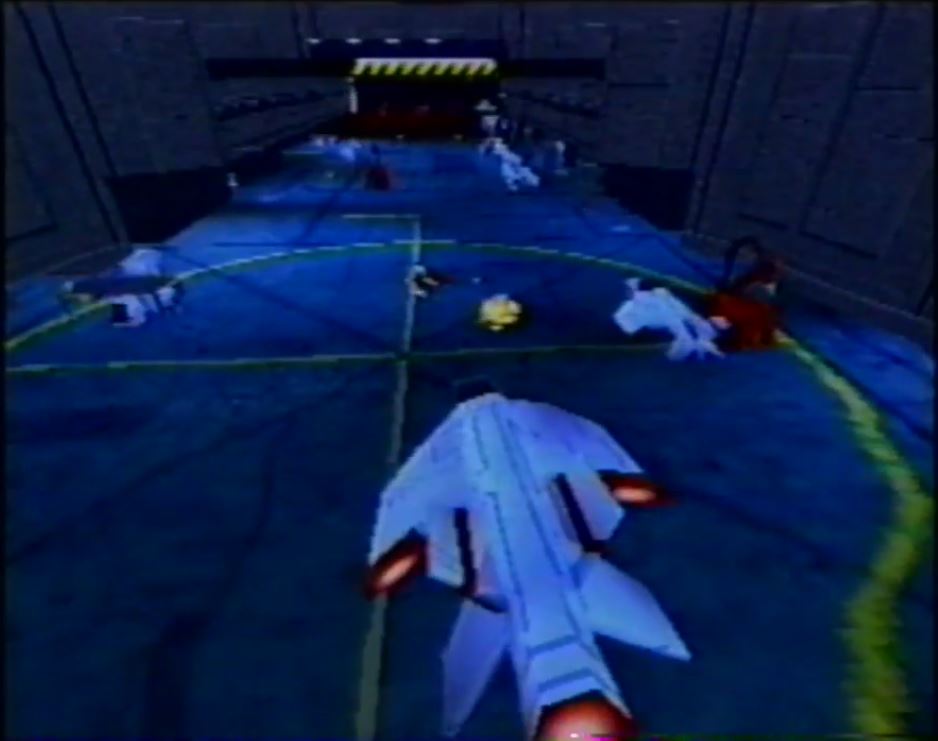Splinter is a cancelled Six-Degrees-Of-Freedom shooter that was in development around 1998 – 2000 by Stromlo Entertainment, planned to be published on PC by Electronic Arts. While the game is basically forgotten today, it was quite hyped at the time by gaming websites and magazines, with journalists seeing it as the next Descent mixed with Half Life, offering complex story and interesting game mechanics.
As we can read on IGN:
“When we highlighted this aspect of the game as well as the combination of organic enemies (e.g. wasps) and manmade adversaries (e.g. flying drones) and compared it with similar elements found in Half-Life, Greg Paltra was quick to add his thoughts: “Half-Life was a really great game. We were already well into development when it came out and we had our first look at it. We could really appreciate what it had to offer. Anyone who played Quake or something and then played Half-Life would realize the difference in the world they had created. I think we have tried to do the same sort of thing with Descent or Forsaken — we’ve got their basic game mechanic, but we’ve added the whole richness of the world and a believable story and a sense of character to really bring that genre to life. I think Half-Life really set the standard for what a game should be for the next generation of software that is out there.”
Players would take the role of a US military trying to retrieve a secret weapon called MERC, a sci-fi craft which can miniaturize itself to go undetected in restricted areas. It seems you would also find yourself miniaturized, exploring such places as ants-nests and shooting down huge insects. As we can read on IGN:
“Splinter is set in present day Blount Island, Mississippi at a secret government laboratory that is home to The Roanoke Project. It is a highly classified attempt by military scientists to perfect the science of nanotechnology and miniaturization. Research has led to the development of molecular robotics, self replicating manufacturing systems and the crowning glory, the Micro Emergency Response Craft now known simply as The MERC. It is a craft with the most advanced weapon systems ever produced and it can be miniaturized to the size of a quarter. Its ability to penetrate the most secure facilities ever devised has made it the most valued piece of military hardware on the planet. One little problem has come up though… it’s missing. “
“The cinematic background and relationships of Stromlo are very obvious in the character driven storyline but perhaps is most visible through the cinematic cutscenes that appear throughout the game. The movie scenes are done completely in CGI by visual effects house Animal Logic. The Sydney based company has worked in television and film with credits including The Thin Red Line and The Matrix.”
“Across the five levels, there are between 5 and 10 sections within each mission. The environments vary a lot, from very organic environments like the ant’s nest to man made environments like munitions factories. The diversity in the architecture, lighting and even the gameplay changes across each mission and within each mission. It’s something that people have responded to very strongly. We’ve got very favourable reports especially compared to something like Descent and some of the other games that are out there where its all been seen and it’s all been done and I think what we’ve got is very new and it’s very diverse within its own content.”
“The range of weapons gains some flexibility with secondary fire for all of your armaments. You start with a basic mini-gun that has a secondary fire like a shotgun all barrels fire together. The strategy of laying a stream of fire into an approach ant followed up by a close-up all barrel blast seems like fun. Other weapons include a heavy cannon, rocket launcher, grenade launcher and flamethrower. The secondary fire of the flamethrower (a big fire ball) and the rockets were probably our favourites in terms of visuals and ant killing mayhem. “
“There will be no floating weapons, or powerups in the game at all. Resources will be collected from organic and man made sources using the ‘Resource bot’. Organic sources such as fungi or dead insects can be converted into fuel for the flamethrower. Man made enemies may have ammunition you can use as well. Your prototype MERC is also fully equipped with all the weapons you will need in the game ¿ however the weapon system has been code locked by Trilling. You will need to link with other crafts you down to upload the codes to unlock your weapons. “
The team was also working on another game for EA, titled “Hydra”, which was also canned in early development:
“We were very lucky that Tony had an existing relationship with EA and we were fortunate at the time that EA Australia were looking to do some work with Australian developers so we had an introduction which led to a co-publishing deal for our first two projects. Stromlo’s second title Hydra will be based on a completely new engine and it will also have a strong focus on characters. It will be a different sort of game. We’ve done quite a bit of work on the new engine and some preliminary work on the concepts and characters but we’re really not ready to talk about it — you’ve really got to get your first one out there and keep your focus on that!”
Unfortunately EA killed the team when pulled the plug on Splinter, as we can read on PC Powerplay magazine (issue 054, 2000)”
“Melbourne-based developer, Stromlo Entertainment, has closed its doors following EA’s withdrawal of financial backing for the Descent-esgue shooter, Splinter. EA allegedly felt that Splinter too closely resembled Forsaken, which sold poorly worldwide. Despite the fact that Splinter was nearing completion, EA pulled the plug, forcing the company to undergo liquidation. Several former Stromlo employees have now moved on to other local companies including Auran and Blue Tongue.”
We don’t know how much of the game was completed before the cancellation, but we can hope someone could find a playable proto in the future as it looked like it could have been a cult-classic if only released.
Thanks to jackgrimm99 for the contribution!
Images:
Videos:


